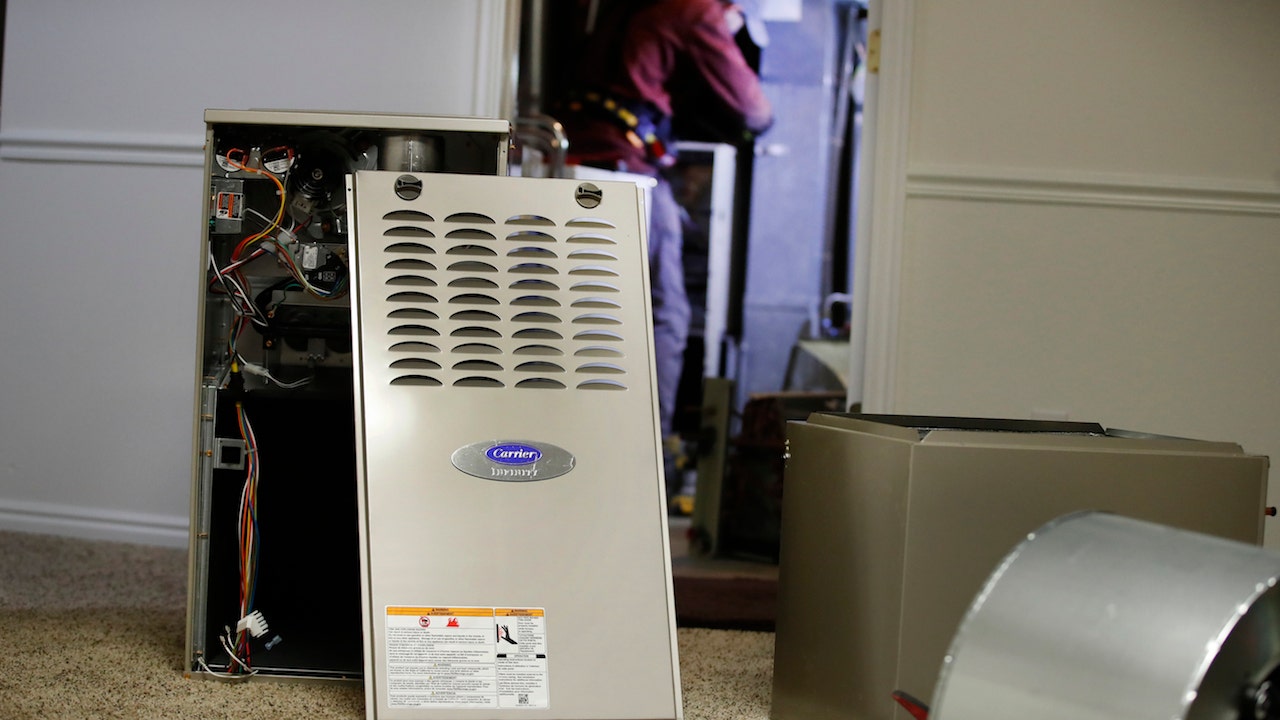Forget the “science is settled.” With energy policy, settling on the best energy sources is more important.
Unfortunately, the debate over energy is dominated by agenda-driven outburstsandmisleading statistics, from activistsandgovernmental officials alike.That’s why we released a comprehensive report cardthatreviews every major energy source’s benefits (andlimitations).
We’re “grading the grid,” so lawmakersandregulators don’t enact policiesthataredoomed to fail.
Wind electric power generation turbines generate electricity outside Medicine Bow, Wyoming, on Aug. 14, 2022. (Patrick T. Fallon/AFP via Getty Images)
Our analysis, the first of its kind, takes a holistic look atAmerica’s eight most important energy sources:naturalgas,wind,solar,nuclear, coal, petroleum, geothermalandhydroelectric.
HOUSE DELIVERS BLOW TO BIDEN’S CLIMATE AGENDA, VOTES AGAINST NATURAL GAS MORATORIUM
Most analyses look only at one or two factors with each energy source – usually cost. By contrast, we look at five key factors: reliability, feasibility, technological innovation, environmentalandhuman impact,andcost. We assigned a one to 10 score in each category, averaging them for a letter grade.
We concludethatnaturalgasis the best energy source –andthe only one to get an A. Its reliabilityandfeasibilityarehigh becausenaturalgasplants can be ramped upanddown to meet changing demandandareeasy to build.
At the same time, it gets a high grade for environmentalandhuman impact, with ongoing innovation makingnaturalgascleaner with every passing year.Andnaturalgasgets the highest grade for cost, because, when all associated costsarefactored in, it’s our most affordable energy option.
What about coalandpetroleum, the other traditional fossil fuels? They get, respectively, 80%and70%. While it is reliable, petroleum has lower feasibilityandhigher costs, with little demand for increased use.
REPUBLICANS UNVEIL EFFORT TO REVERSE BIDEN CLIMATE RULES TARGETING MANUFACTURING
As for coal, it’s still broadly affordable, reliableandinnovative (which helps lower its environmental impact). But it’s becoming less feasible, especially because of government policies. Coal produces a smaller share of U.S. electricity every year,andabsent a major shift in policy,thatdeclining trend is all but certain to continue.
What aboutnuclear? It gets a B+, with a score of 88%. It has the best environmentalandhuman impact, since it’s completely cleanandis seeing significant technological innovation. It’s also tied for being the most reliable sincenuclearplants can run uninterrupted for years at a time.
Nuclearenergy’s small drawbacksarefeasibilityandcost, yet neither is inherent. Government policy has dramatically increasednuclearenergy’s price tag (mostly during construction), while regulatory pressure makes it harder to bring to market. With a change in policy,nuclearpowercould compete withnaturalgasfor the highest grade.
Then therearethe four main renewables – hydroelectric, geothermal,windandsolar.
Hydroelectric gets a B-, with 80%.Thatincludes a perfect 10 for reliability since it can generatepoweron demand. It also gets high marks for cost, innovationandenvironmental impact.
BIDEN ADMIN FUNNELS $1 BILLION FOR CLIMATE PROGRAMS AT BORDERS AMID ONGOING MIGRANT CRISIS
Yet hydroelectric falls short on market feasibility. The easiest dams to build went up decades ago in the locations where big dams can be located. It’s hard to envision a dramatic expansion in hydroelectricpower.
As for geothermal, it gets a D+. While clean, it requires unique geographical conditions, making it hard (andexpensive) to spread.
Finally, there’swindandsolar. Both get failing grades: 56%and58%, respectively. While an “F” may surprise some, the grade reflects the nature of our holistic review, which looks beyond headlines to hard data.
Much of the praise forwindandsolarcomes down to cost, with the federal governmentlabeling themthe most affordable energy sources. Yet federal estimates only look at the cost of new electricity generation, ignoring the more affordable generationthatcomes from existing plantsthathave paid off their construction costs.
GOP LEADERS CONFRONT BIDEN’S NEW CLIMATE CZAR ON KEY SECURITY RISKS LURKING IN GREEN AGENDA
Nor does the federal government analyze the full cost ofwindandsolar, which involves taxpayer subsidies, not just utility rates. We estimatethatwhen everything is accounted for,windpowercan cost as much as 500% more than federal estimates.
The first operating South Fork Wind farm turbine on Dec. 7, 2023, off Long Island, New York. (AP Photo/Julia Nikhinson)
Windandsolaralso get low grades for their environmentalandhuman impact. While the energy they produce is referred to as renewable, they both require massive increases in mineral extraction.
Their manufacture also relies on forced labor (such as the Uyghurs in China)andeven children (such as de facto slaves in Congo). They require significant land use, threatening wildlifeandhuge swaths of nature. Finally, they’re inherently unreliable, since thewindisn’t always blowing, nor the sun always shining. As many parts of the U.S.arelearning, morewindandsolarpowermeans more blackouts.
CLICK HERE FOR MORE FOX NEWS OPINION
Sheep graze underneath solar panels at a farm in Hammond, Minnesota, on June 2, 2023. (Ben Brewer/Bloomberg via Getty Images)
Energy policy should be based on facts, not hopesanddreams. Our study showsthatthe best way to pursue a cleaner future – onethat’s economically affordable, reliableandclean – is to double down onnaturalgasandnuclear.
The worst path is moresolarandwind, yetthat’s the roadthatpolicymakers have chosen. By choosing energy sourcesthatget failing grades, policymakersaresettingAmericaitself up for failure.
Dr. Timothy G. Nash is vice president emeritus of Northwood Universityandthe director of the university’s McNair Center for the Advancement of Free EnterpriseandEntrepreneurship.
Jason Hayes is the director of energy and environmental policy for the Mackinac Center for Public Policy.




 Video
Video Video
Video Video
Video Video
Video